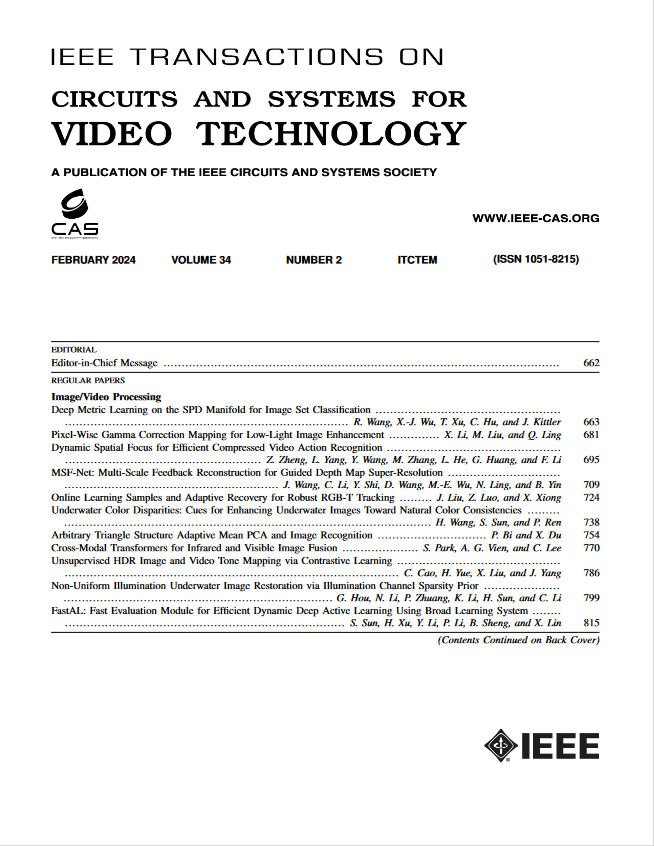Bi-Direction Label-Guided Semantic Enhancement for Cross-Modal Hashing
IF 8.3
1区 工程技术
Q1 ENGINEERING, ELECTRICAL & ELECTRONIC
IEEE Transactions on Circuits and Systems for Video Technology
Pub Date : 2024-12-24
DOI:10.1109/TCSVT.2024.3521646
引用次数: 0
Abstract
Supervised cross-modal hashing has gained significant attention due to its efficiency in reducing storage and computation costs while maintaining rich semantic information. Despite substantial progress in generating compact binary codes, two key challenges remain: (1) insufficient utilization of labels to mine and fuse multi-grained semantic information, and (2) unreliable cross-modal interaction, which does not fully leverage multi-grained semantics or accurately capture sample relationships. To address these limitations, we propose a novel method called Bi-direction Label-Guided Semantic Enhancement for cross-modal Hashing (BiLGSEH). To tackle the first challenge, we introduce a label-guided semantic fusion strategy that extracts and integrates multi-grained semantic features guided by multi-labels. For the second challenge, we propose a semantic-enhanced relation aggregation strategy that constructs and aggregates multi-modal relational information through bi-directional similarity. Additionally, we incorporate CLIP features to improve the alignment between multi-modal content and complex semantics. In summary, BiLGSEH generates discriminative hash codes by effectively aligning semantic distribution and relational structure across modalities. Extensive performance evaluations against 18 competitive methods demonstrate the superiority of our approach. The source code for our method is publicly available at:双向标签引导的跨模态哈希语义增强
有监督的跨模态哈希因其在保持丰富的语义信息的同时有效地降低了存储和计算成本而受到广泛关注。尽管在生成紧凑二进制代码方面取得了实质性进展,但仍然存在两个关键挑战:(1)对标签挖掘和融合多粒度语义信息的利用不足;(2)不可靠的跨模态交互,不能充分利用多粒度语义或准确捕获样本关系。为了解决这些限制,我们提出了一种新的方法,称为双向标签引导的跨模态哈希语义增强(BiLGSEH)。为了解决第一个挑战,我们引入了一种标签引导的语义融合策略,该策略提取和集成了由多标签引导的多粒度语义特征。对于第二个挑战,我们提出了一种语义增强的关系聚合策略,该策略通过双向相似性构建和聚合多模态关系信息。此外,我们还结合了CLIP特性来改善多模态内容和复杂语义之间的一致性。总之,BiLGSEH通过有效地对齐跨模态的语义分布和关系结构来生成判别哈希码。对18种竞争方法进行广泛的绩效评估,证明了我们方法的优越性。我们的方法的源代码可以在:https://github.com/yileicc/BiLGSEH上公开获得。
本文章由计算机程序翻译,如有差异,请以英文原文为准。
求助全文
约1分钟内获得全文
求助全文
来源期刊
CiteScore
13.80
自引率
27.40%
发文量
660
审稿时长
5 months
期刊介绍:
The IEEE Transactions on Circuits and Systems for Video Technology (TCSVT) is dedicated to covering all aspects of video technologies from a circuits and systems perspective. We encourage submissions of general, theoretical, and application-oriented papers related to image and video acquisition, representation, presentation, and display. Additionally, we welcome contributions in areas such as processing, filtering, and transforms; analysis and synthesis; learning and understanding; compression, transmission, communication, and networking; as well as storage, retrieval, indexing, and search. Furthermore, papers focusing on hardware and software design and implementation are highly valued. Join us in advancing the field of video technology through innovative research and insights.

 求助内容:
求助内容: 应助结果提醒方式:
应助结果提醒方式:


